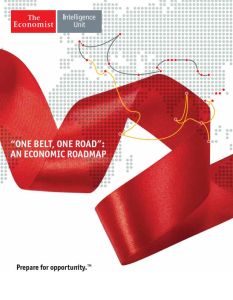Join getAbstract to access the summary!

Join getAbstract to access the summary!
The Economist Intelligence Unit
“One Belt, One Road”
An Economic Roadmap
EIU, 2016
What's inside?
Beyond a Great Leap Forward, China is making a Great Leap Outward.
Recommendation
The enormity of China’s “One Belt, One Road” (OBOR) transcontinental infrastructure drive affirms the continuation of the country’s global economic march. OBOR’s expanse is in all directions, as China seeks to grow its trade ties and influence throughout Eastern Europe, Russia, the Middle East, Africa and Asia. Yet China faces a variety of physical, political and financing risks, which this engaging, well-researched and accessible analysis from the Economist Intelligence Unit illuminates. getAbstract recommends this comprehensive study to executives, policy makers and investors interested in understanding the plan and progress of the new Silk Road.
Summary
About the Author
The Economist Intelligence Unit is an independent research and analysis organization.
























































































































Comment on this summary